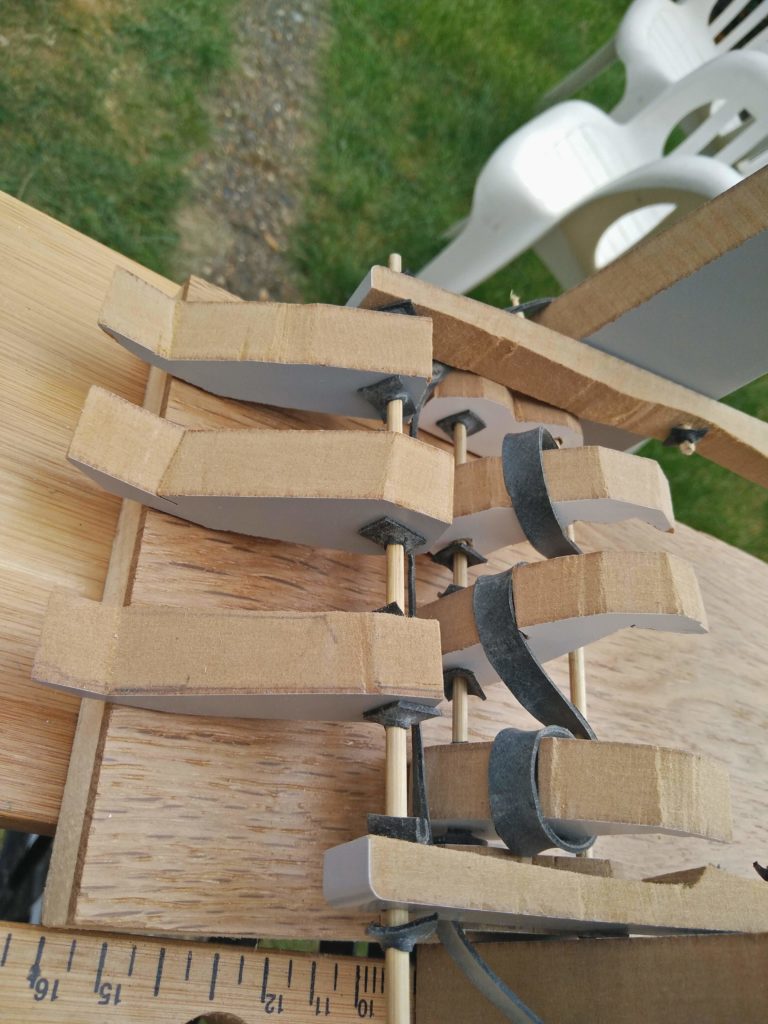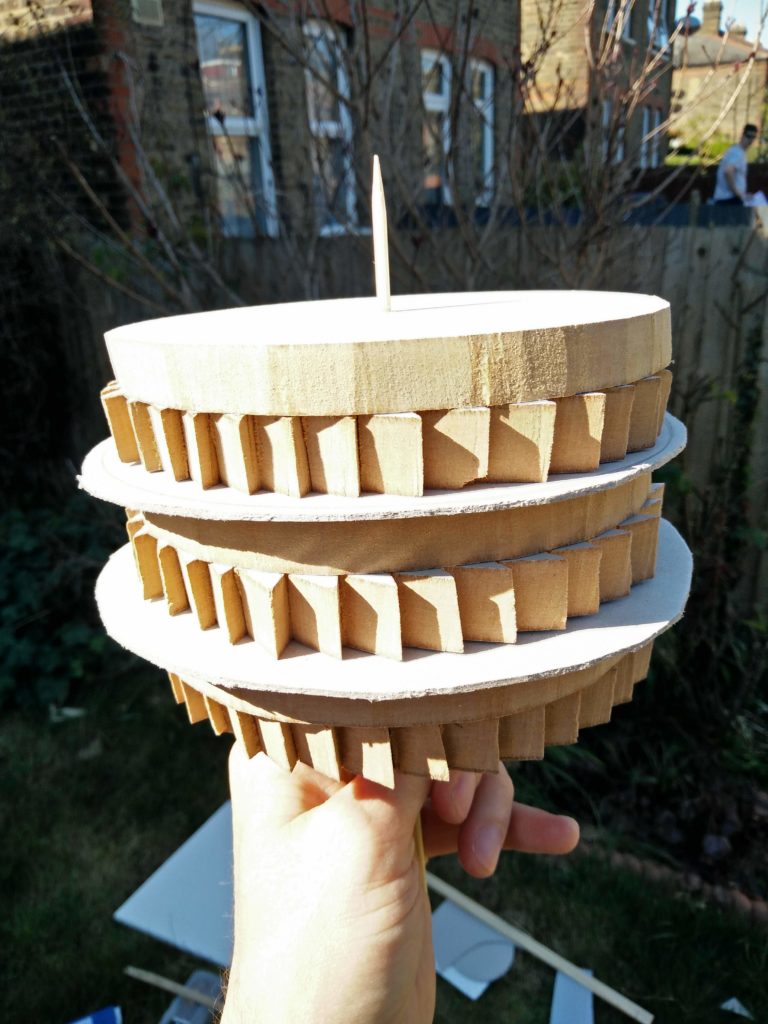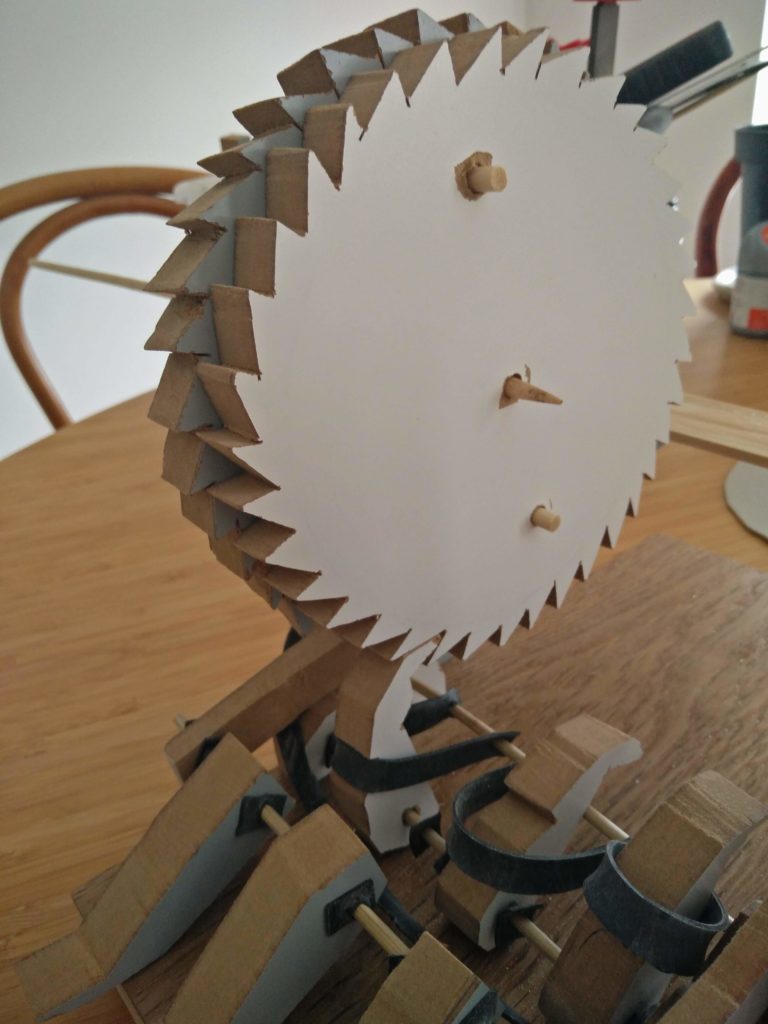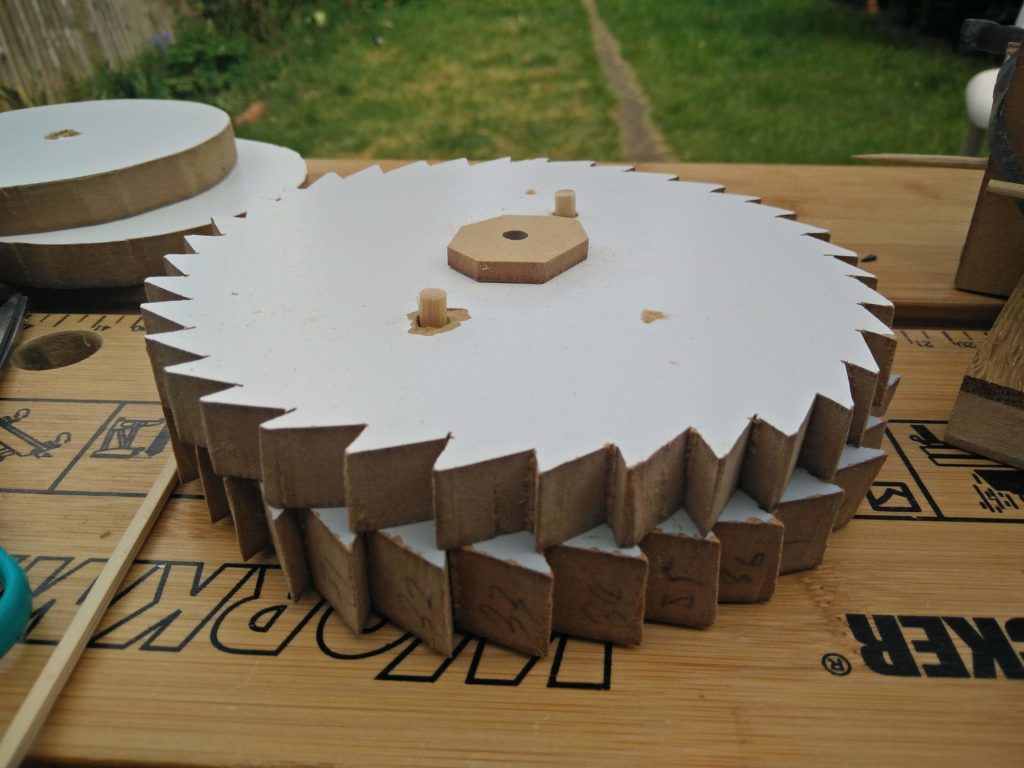To take my mind off all this plague, I’ve been making a sort of replica of an Enigma machine.
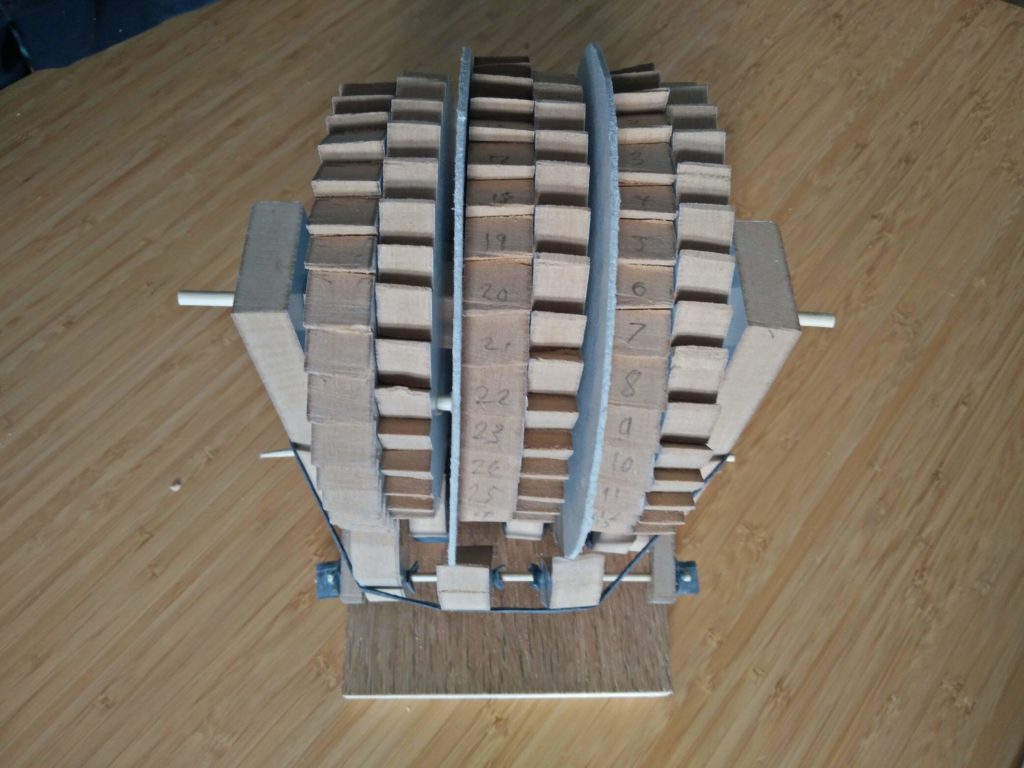
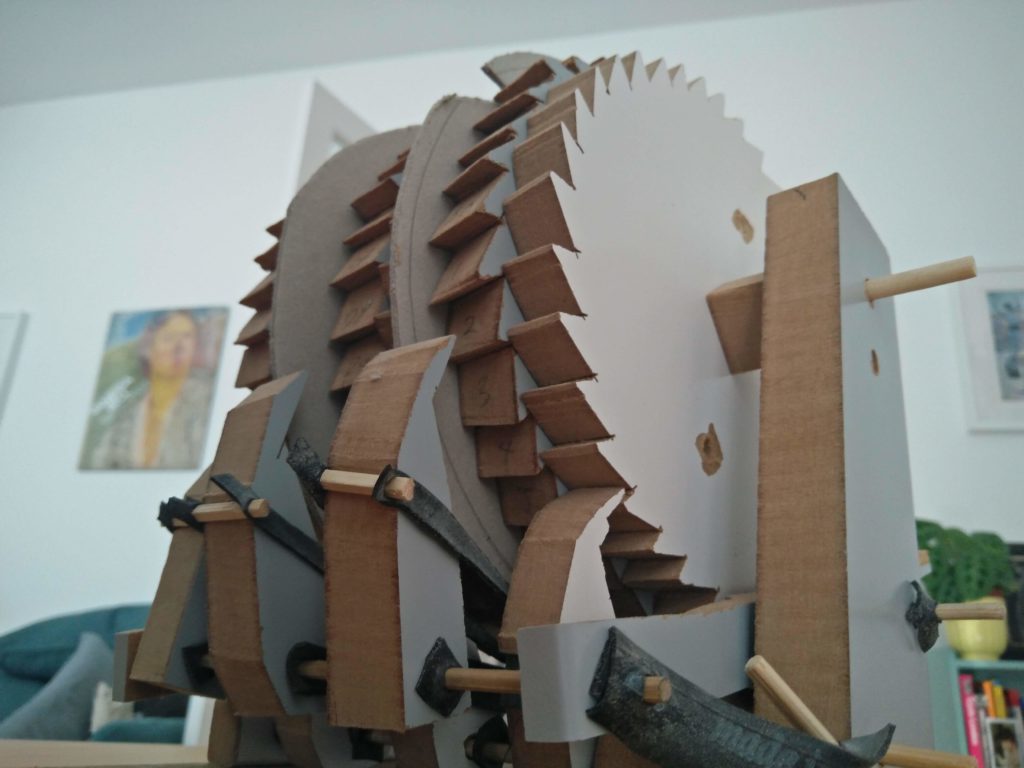
This version is a subset of the full Enigma machine. It includes the rotors and stepping mechanism, but no keyboard and electrical subsystem. I took a lot of inspiration from this similar project.
Since we can’t go out for fear of catching / spreading a deadly virus, I used bits of scrap lying around the house. I didn’t follow any plans, just guesswork, trial and error. The wood is mostly MDF from old IKEA draws, and there are lots of barbecue skewers and a bicycle inner tube in there too.
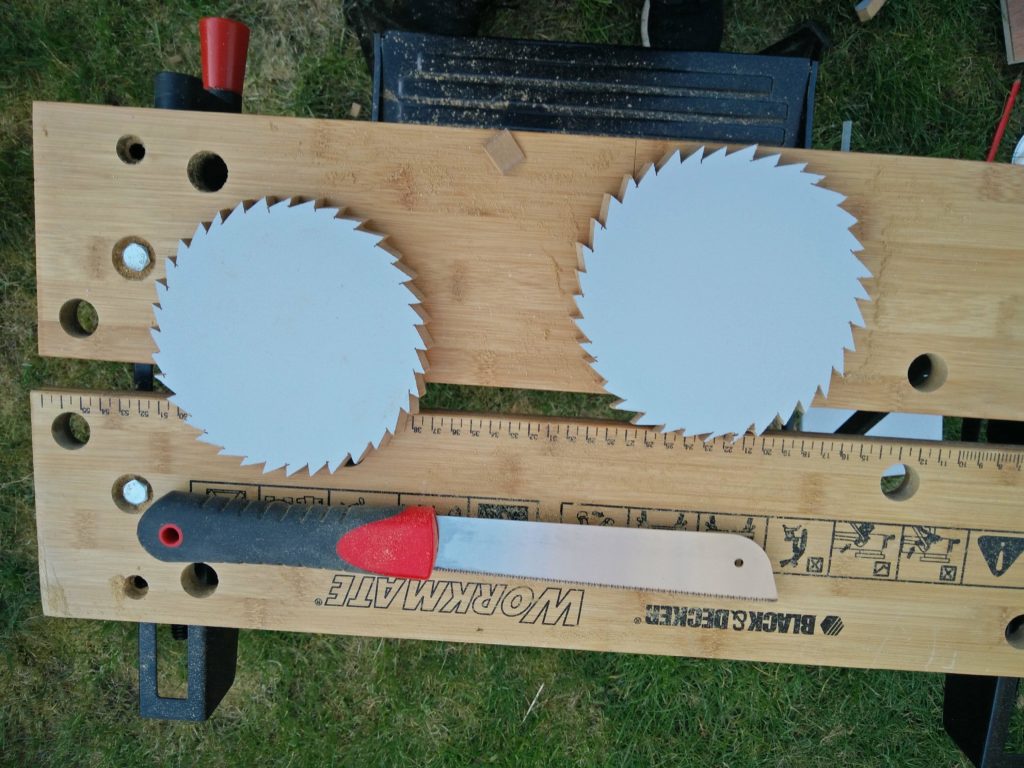
I wanted to minimise use of power tools (really don’t want to have to go to hospital right now!), so I cut everything by hand using a Japanese Dozuki saw, which is incredible for making precise cuts in soft wood (I can’t believe people still use any other kind of saw for this sort of work).
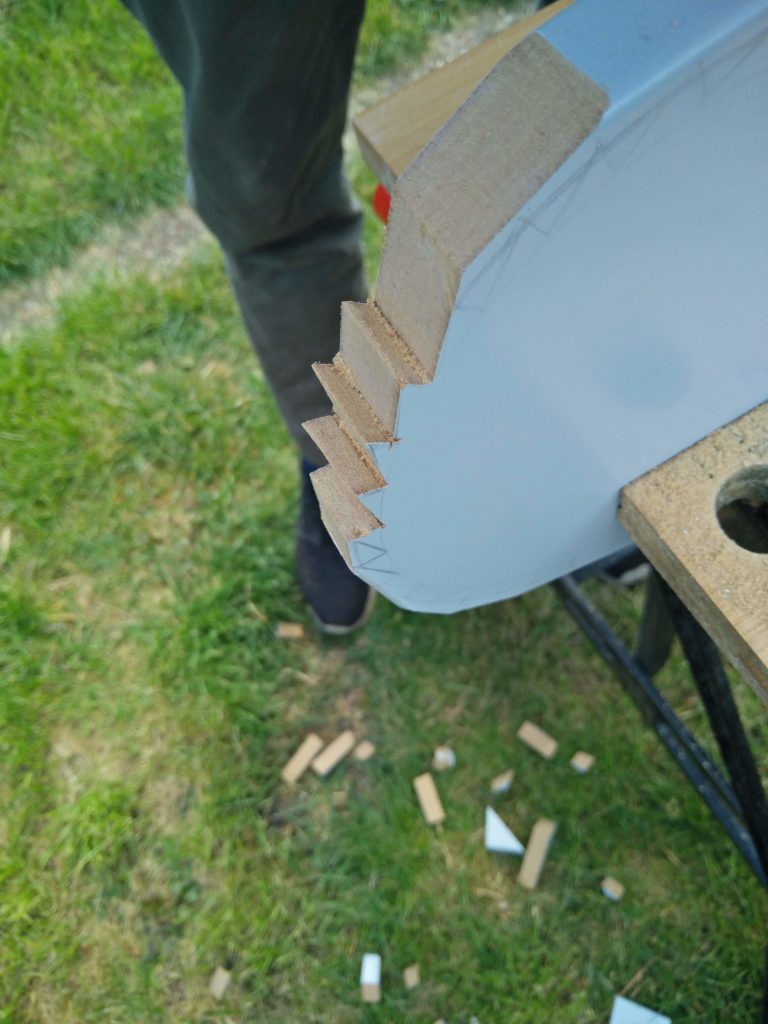
There are a few major differences to the real Enigma stepping mechanism:
First, there is space for 36 characters rather than the original 26, so you can encode numbers 0-9 as well as letters A-Z. This means each rotor has 36 teeth, which means there are a lot of tiny cuts to make; I slightly regretted this decision after cutting the third rotor.
Second, rather than making a continuous wavy notch to control the stepping (tricky to cut by hand), I decided to make a separate pair of ratchets and palls going in the opposite direction, to stop the rotor over-stepping, which are attached to the primary ratchet and (pushing) palls. This second set of palls hides just below the primary. This makes it slightly more fiddly to assemble underneath, especially with their own individual little harnesses, but they do look pretty cute.
Does it work?
The double-stepping mechanism works, with a satisfying chorus of clicking noises, although it’s pretty janky and requires frequent re-adjusting of the palls. See videos posted on twitter:
While it obviously doesn’t have the electrical subsystem, keyboard, and lamps, it can be used manually to do something like a fully-functional Enigma encryption / decryption in a couple of ways:
- Stepping only: To encrypt, you tap the single ‘key’ (which would connect to the keyboard in a full system) for every letter you want to encrypt, which turns at least the first rotor (and maybe also the second, and maybe also the third rotor). You then read across from the letter on the first rotor to the equivalently-placed letter on the third rotor. To decrypt, you do the same in reverse, making sure that the starting position of the rotors is the same as during the encryption.
- Stepping and scrambling: as above, but you can also simulate the internal electrical wiring inside each rotor in a real Enigma, which scrambles the input + output. This can be done by maintaining separate tables for each rotor which indicate the scrambled key pairs, or by drawing two sets of characters directly on each rotor, and arrows to indicate how they are to be scrambled (like this very clever and cute paper-and-Pringle can enigma machine).
